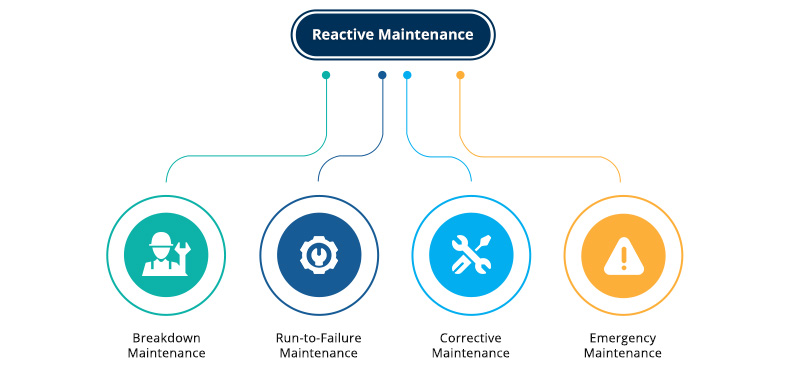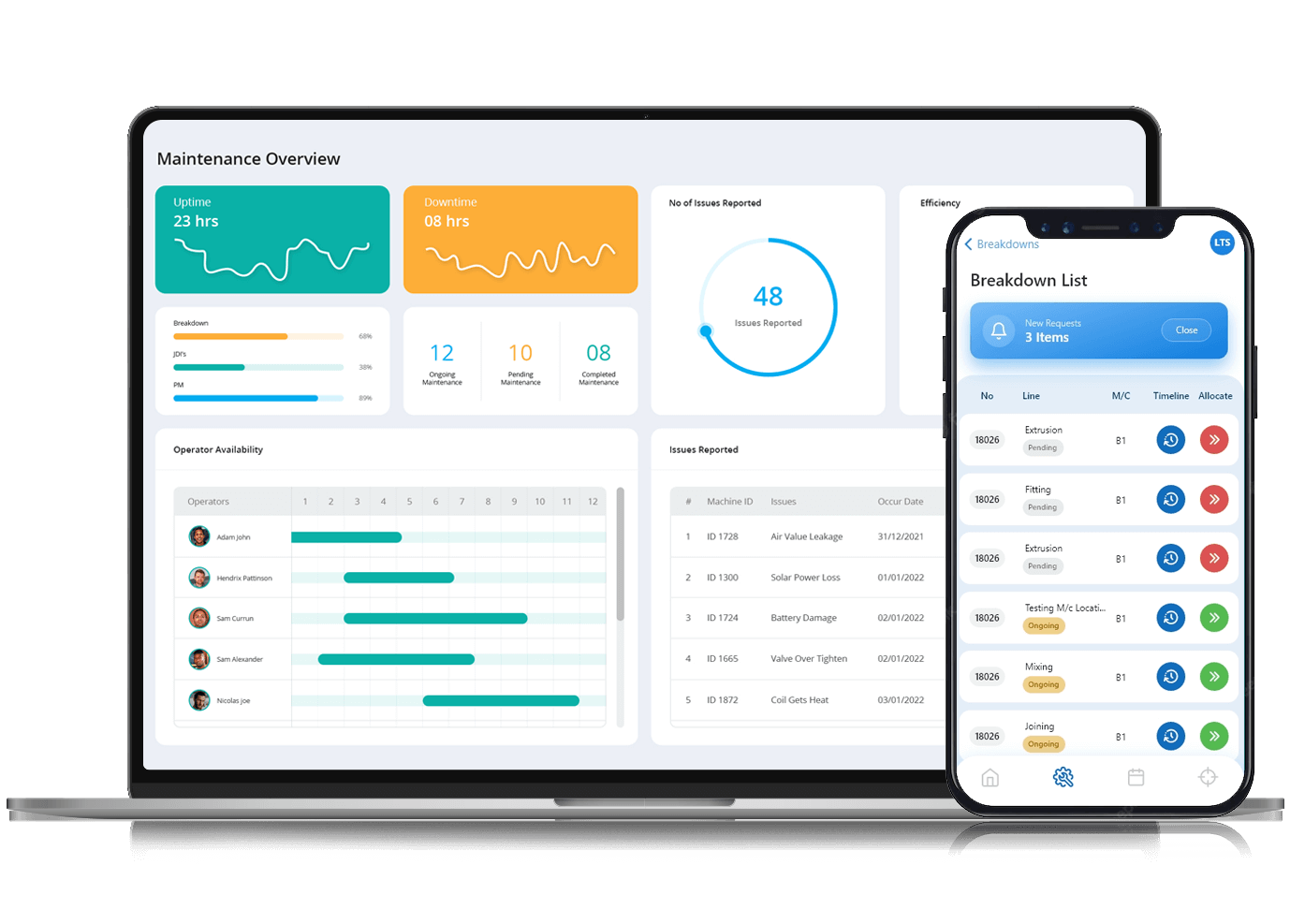Reactive Maintenance & TITAN CMMS
Create and assign work orders from wherever you are. TITAM CMMS, JDI Management feature makes it easier for maintenance technicians to receive and carry out maintenance tasks. Initiate and allocate tasks to engineers with a detailed problem description and possible solutions.


TITAN CMMS Mobile App for Real-Time Alerts
No more missed updates, get alerts faster using TITAN CMMS Mobile App and immediately address, repair and reinstate the machine to its proper working condition. When it is impossible to find a solution on their own, users can reach out to other technicians for help through the live chat option. CMMS manages all machine-related information from its purchase to till-date in a single platform, making it easier for technicians to address issues and rectify them quickly.
What are the four types of Reactive Maintenance?
Reactive maintenance refers to any maintenance activity done as a response to an issue. Various types of reactive maintenance take place depending on the situation.


Breakdown - Maintenance
Maintenance performed on equipment that is currently unusable or has broken down is known as breakdown maintenance; it can either be planned or unplanned.

Run-to-Failure Maintenance
Run-to-failure maintenance results from a deliberate decision to allow the machine to run till it breaks down. Reactive maintenance is performed after the complete breakdown of the machine. No planning or other preventive maintenance activities are performed in that machine.

Corrective Maintenance
From fixing a minor fault that causes the asset to run slowly to do repairs on completely breakdown equipment, corrective maintenance restores the equipment/asset to its proper operating condition.

Emergency Maintenance
Emergency maintenance occurs when equipment stops working unexpectedly and needs to be handled with utmost care as these repairs must be completed ASAP.

Reactive Maintenance Examples
Reactive maintenance is a normal reaction to fix things that is applied to a wide range of assets/equipment from a light bulb to car maintenance. Changing a light bulb is the simplest example for reactive maintenance; the scenario is when the bulb gives out suddenly or become unusable, and the solution is to replace it with a new bulb. Another example would be a car that doesn't start because its battery is drained out, and the reactive maintenance that would take place is replacing the battery with a new one.
TITAN CMMS - The Key to Optimise Maintenance Operations Smart Solution
Worried about managing maintenance operations? TITAN CMMS is here to help! TITAN help organisations track and manage all maintenance-related tasks, boosts asset efficiency and performance, by creating a maintenance request, breakdown request, just do it (JDI), and tasks, at any time from anywhere.
Start Free Trial Watch Video Tell a FriendProactive vs Reactive Maintenance
From a business's financial perspective, reactive maintenance seems economical, as less time and money is needed to get equipment repaired if required. But it should not be the sole maintenance strategy in place. The difference between proactive and reactive maintenance is that; Proactive maintenance strategy anticipates equipment issues in advance and takes necessary steps to prevent their occurrence, whereas reactive maintenance requires no planning and takes place as needed.



